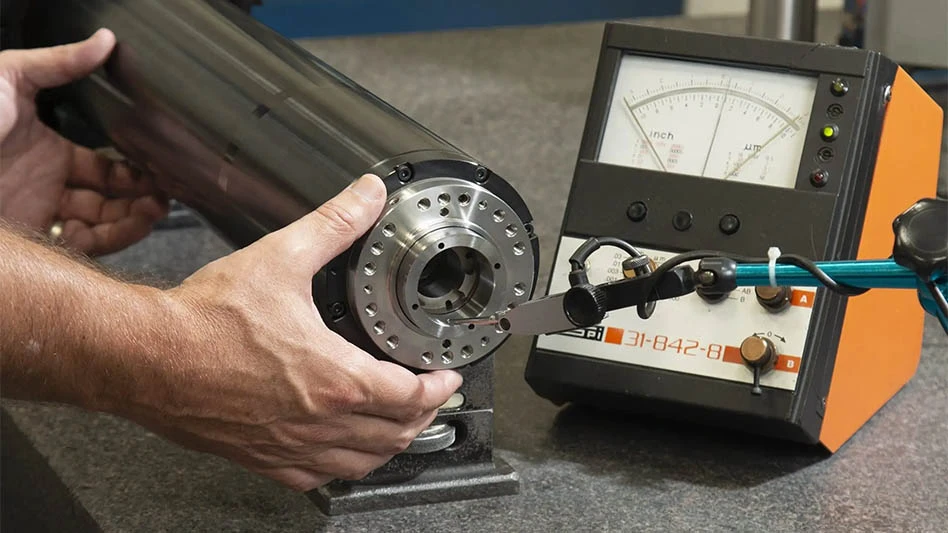
Relativity Space
Relativity Space, the 3D-printed rocket company, has signed an enhanced use lease agreement (EULA) on the vertical test stand at the A-2 complex within NASA’s historic Stennis Space Center in Hancock County, Mississippi. The agreement marks the first time a commercial tenant has modernized an underutilized legacy test stand at NASA Stennis, signifying the strength of the public-private partnership between the two entities. The expansion brings Relativity’s total footprint at NASA Stennis to nearly 300 acres – the largest commercial presence on the site.
Established in the 1960s, NASA Stennis is the nation’s largest propulsion test center. The A-2 Test Stand was constructed in 1966 to test and flight-certify the second stage of the Saturn V, the launch vehicle for the Apollo Program. It was then used for engine testing for the Space Shuttle Program until 2009. Briefly used for the Constellation Program before its cancellation, the A-2 stand sat unused for nearly a decade. Relativity is spurring its rejuvenation, bringing state-of-the-art testing back to the stand. The company has plans to invest $267 million into Stennis and create hundreds of new jobs in the region by 2027 to support the Terran R program development and launch ramp rate.
“New history is being written at Stennis Space Center as we breathe life into the historic A-2 Test Stand with our Terran R program,” said Tim Ellis, co-founder and CEO of Relativity Space. “We appreciate the support from NASA and the state of Mississippi and look forward to continuing to build out our team and testing infrastructure here in the Gulf Coast. The scale of Terran R as a medium-heavy lift reusable launch vehicle is substantial. Exclusive access to these rare, national-asset facilities through partnership with NASA uniquely enables Relativity to develop a world-class launch vehicle. Together with our significant private capital commitments to reinvigorate these facilities, we are building innovative capabilities to solidify America’s leadership in space.”
Building on the legacy of the A-2 stand, Relativity’s new infrastructure will support advanced vertical first stage testing for their medium-to-heavy lift reusable 3D printed rocket, Terran R. With a new stand, the company will be able to uplevel their cadence of testing, increasing the speed of iterative learning cycles and shortening time to market. The existing presence of commodities and convenient canal access further aid in rapid development, solidifying NASA Stennis as an ideal testing location.
“We applaud Relativity Space in announcing this expanded agreement. Since arriving on site in 2016, the company has grown into a valued member of the NASA Stennis community,” said Dr. Rick Gilbrech, director of NASA’s Stennis Space Center. “This increased footprint is a testament to Relativity’s continued progress in the commercial space arena. It also is a testament to the value of NASA Stennis and our test complex infrastructure in supporting commercial space endeavors. We look forward to an ongoing relationship with Relativity team members as they work to achieve their space goals.”
Originally designed to withstand maximum thrust of 1.5 million pounds, the A-2 Test Stand is currently configured to endure thrust up to only 650,000 pounds. With Relativity's upgrades, the stand will be able to accommodate thrust of more than 3.3 million pounds – bringing A-2 back to the forefront of America’s commercial space program.
In addition to developing the A-2 site, Relativity holds 10-year exclusive-use leases with the option for 10-year extensions on the E-2 and E-4 stands, has a commercial use agreement for the E-1 site, and is building out new engine and stage test infrastructure in the R Complex at NASA Stennis – with an ever-growing permanent team leading test operations. The company is actively hiring in the region, looking to increase their Gulf Coast presence.
Relativity Space’s 3D printed rocket, Terran 1, reached space in March 2023. Building on the Terran 1 program, the focus is on Terran R, a 3D-printed medium-to-heavy lift reusable rocket. Starting with these orbital class vehicles, Relativity is focused on offering a highly attractive launch service offering – designing and manufacturing reusable rockets that offer high performance and reliability, while costing less to produce and fly.
The company was founded on the premise that additive manufacturing, alongside artificial intelligence and autonomous robotics, will deliver eventual superiority over traditional aerospace manufacturing methods.
Relativity Space is an American aerospace company headquartered in Long Beach, California with teams located at Cape Canaveral Space Force Station, Florida; NASA Stennis Space Center, Mississippi; Seattle, Washington; Vandenberg Space Force Base, California; and Washington, D.C.
NASA’s Stennis Space Center, near Bay St. Louis, Mississippi, is a major economic engine for the Gulf Coast region, with an average direct annual impact of more than $625 million within a 50-mile radius.
Latest from Aerospace Manufacturing and Design
- AviLease orders up to 30 Boeing 737 MAX jets
- 256-piece general maintenance tool kit
- JetZero all-wing airplane demonstrator achieves milestones
- Cermet indexable inserts for medium turning operations
- Trelleborg acquires Aero-Plastics
- Industrial automation products, enclosed encoders
- #61 - Manufacturing Matters: CMMC roll out: When do I need to comply?
- AIX shows aircraft interiors are a strategic priority for global airlines





